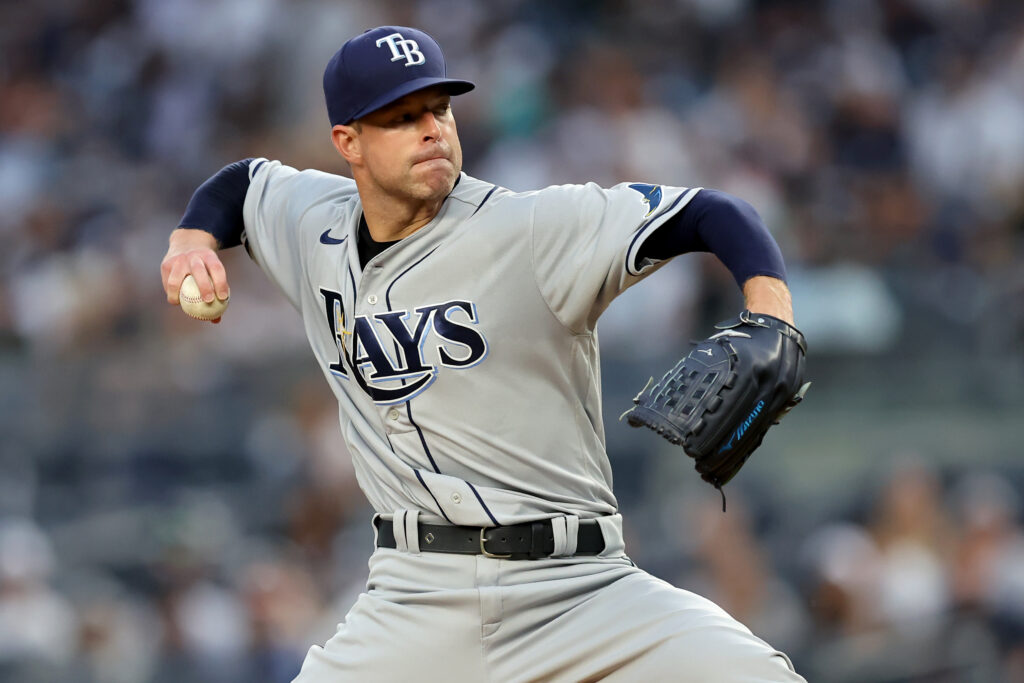
The Red Sox have already been linked to multiple free agent pitchers, with such names as Kodai Senga, Andrew Heaney, Seth Lugo, and Tyler Anderson (since signed by the Angels), all reported as names on Boston’s radar, and the Sox also have interest in re-signing two of their own free agents in Nathan Eovaldi and Rich Hill.
Corey Kluber is also on this list, as the right-hander tells Alex Speier of the Boston Globe that he had again had some talks with Boston this winter. After previously negotiating with the Red Sox in each of the right-hander’s previous two trips to the free agent market, Kluber ended up signing with the Yankees for the 2021 season and then with the Rays in 2022. Kluber posted a 4.34 ERA and a league-best 1.2 BB/9 over 164 innings with Tampa Bay, and pitching in Boston would have some extra appeal since Kluber and his family live in Winchester, Massachusetts.
While the Red Sox are actively seeking out more arms, Speier writes that it doesn’t appear the team is aiming for the very top of the pitching market. This means that Justin Verlander, Jacob deGrom, Carlos Rodon, and Chris Bassitt are unlikely to be landing in Boston, for a variety of reasons. In the view of most pundits (including MLB Trade Rumors’ own top 50 free agent list), these are the four established Major League starters likely to score the biggest contracts on the open market this winter, and it seems as though the Red Sox aren’t eager to make quite such a big commitment to a single player. “The Sox are more likely to spread spending across several targets,” Speier writes, so hypothetically, Boston could sign the likes of Heaney and Eovaldi for less than it would cost to sign Verlander alone just in 2023 salary.
Senga could be something of an exception, as the Japanese ace is drawing enough widespread interest that it now looks like he could land one of the bigger contracts of any pitcher this offseason. MLBTR projects Senga for five years and $75MM, and while the Red Sox have interest, it is possible the bidding could get beyond their comfort zone.
The qualifying offer is also a factor, as deGrom, Rodon, and Bassitt all rejected the QO and thus have draft compensation attached to their services. Since the Red Sox surpassed the luxury tax threshold in 2022, they’d face a higher penalty ($1MM in international bonus money, and their second- and fifth-highest picks in the 2023 draft) for signing a qualifying free agent. Since Eovaldi and Xander Bogaerts also rejected qualifying offers, the Red Sox could net two compensatory picks back if those player signed elsewhere, yet those picks would only fall after the fourth round as further penalty for exceeding the luxury tax. In short, the draft-related tradeoff probably means that the Sox would prefer to not sign a QO free agent, all things considered.
This strategy might not hold much appeal to Boston fans, who haven’t been pleased about the big-market team’s approach to spending in recent years. The Red Sox haven’t had much progress in trying to lock up Bogaerts or Rafael Devers to new contracts, and the team’s desire to reset their tax bill in 2020 was one of the factors behind trading Mookie Betts to the Dodgers. However, the Sox were willing to go over the tax line this past season, despite only a longshot chance at a playoff berth at the trade deadline. The Red Sox ended up with a disappointing 78-84 record and now an extra tax burden to boot, in the form of the QO-related penalties.
That said, it was just two offseasons ago that chief baseball officer Chaim Bloom also used the “spread out the spending” strategy to bolster the roster that ended up making the 2021 ALCS. And, back in the 2012-13 offseason, the Red Sox famously made a number of lower-level acquisitions that all paid off in the best possible fashion, as Boston captured the 2013 World Series. So there is certainly recent evidence that a more measured approach to the offseason can work out swimmingly, and of course, there is still plenty of quality pitching available even in the second or third tiers of the open market, not to mention what else might emerge in trade talks.
Credit : Source link






